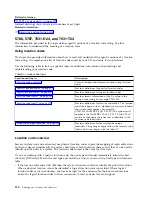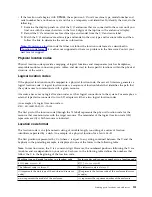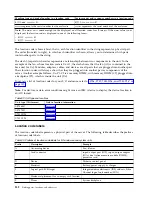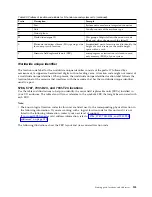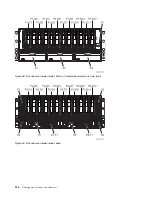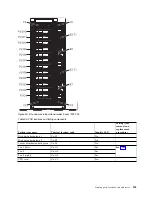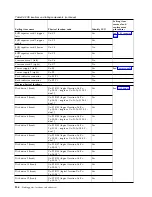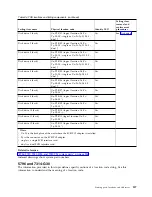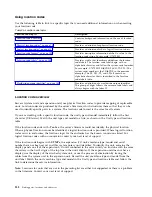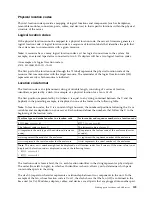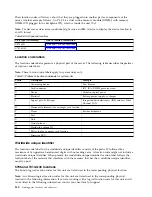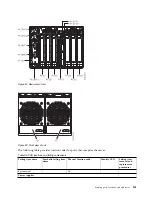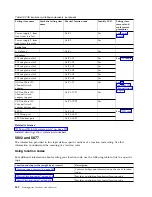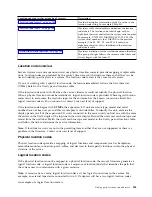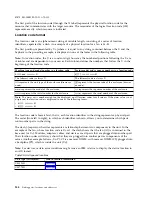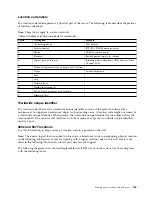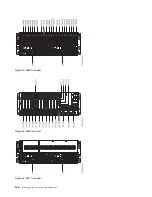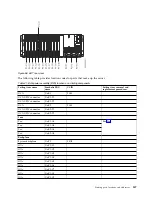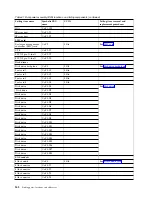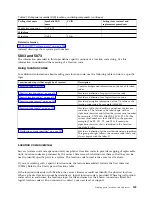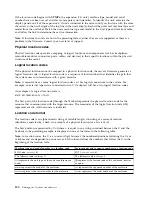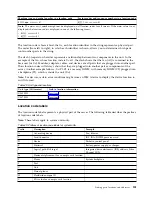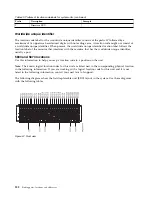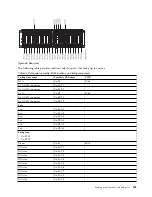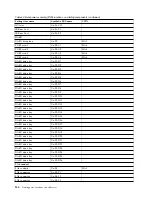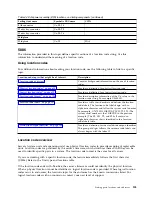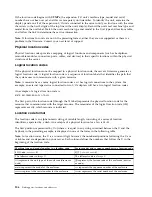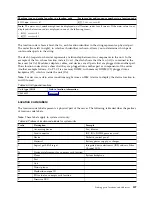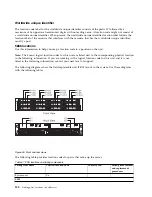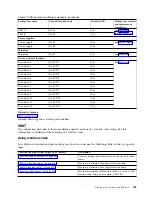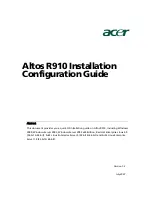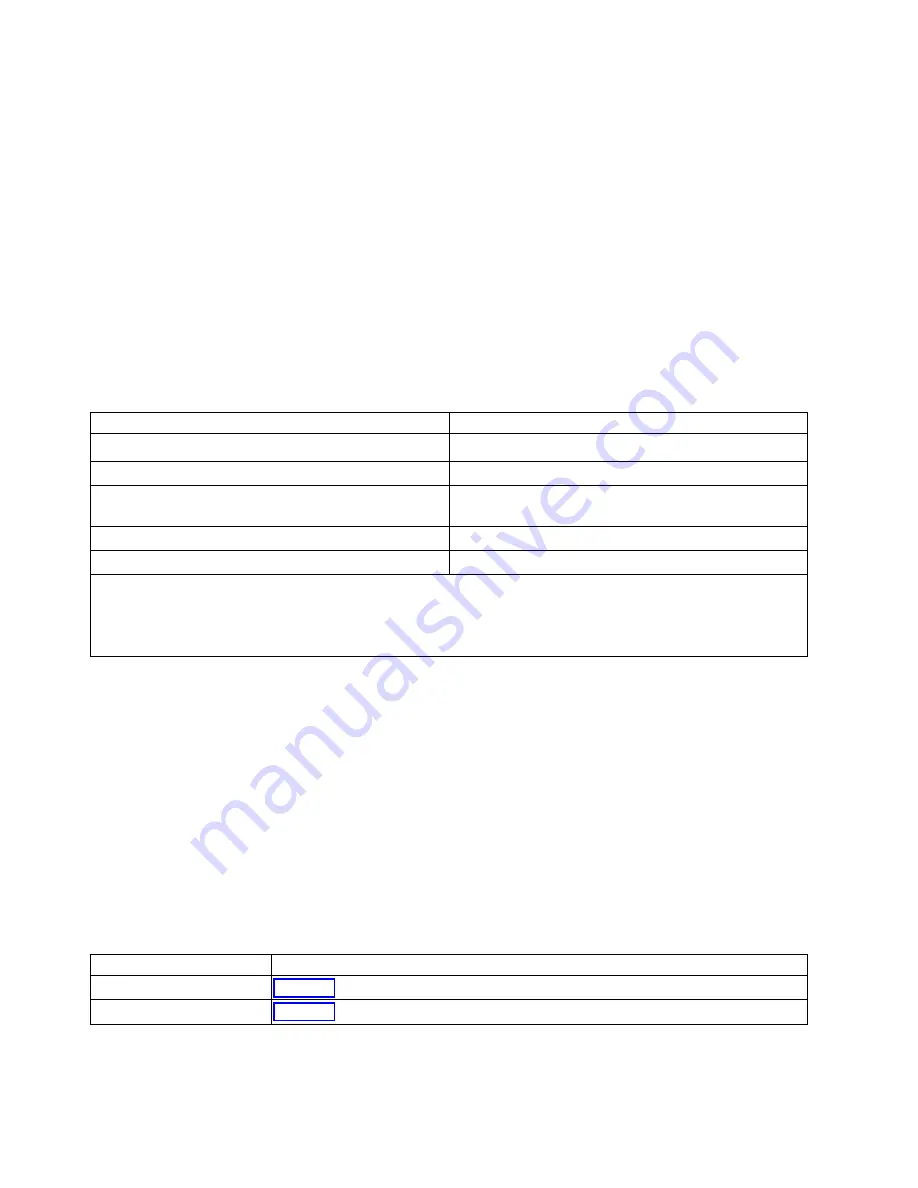
U7879.001.10ABCDE-P3-C31-T2-L23
The first part of the location code (through the
T2
label) represents the physical location code for the
resource that communicates with the target resource. The remainder of the logical location code (
L23
)
represents exactly which resource is indicated.
Location code format
The location code is an alphanumeric string of variable length, consisting of a series of location
identifiers, separated by a dash. An example of a physical location for a fan is
Un-A1
.
The first position, represented by Un (where n is equal to any string contained between the U and the
hyphen) in the preceding example, is displayed in one of the forms in the following table.
Note:
In location codes, the U is a constant digit; however, the numbered positions following the U are
variables and are dependent on your server. Each column defines the numbers that follow the U in the
beginning of the location code.
Machine type and model number in a location code
Feature codes and sequence numbers in a location code
Utttt.mmm.sssssss-A1
Uffff.ccc.sssssss-A1
The leftmost code is always U.
The leftmost code is always U.
tttt represents the unit type of the enclosure (drawer or
node).
ffff represents the feature code of the enclosure (drawer
or node).
mmm represents the model of the enclosure.
ccc represents the sequence number of the enclosure .
sssssss represents the serial number for the enclosure.
sssssss represents the serial number of the enclosure.
Note:
The mmm or ccc number might not be displayed on all location codes for all servers. If the mmm value is not
displayed, the location code is displayed in one of the following forms:
v
Utttt.sssssss-A1
v
Uffff.sssssss-A1
The location code is hierarchical; that is, each location identifier in the string represents a physical part.
The order (from left to right), in which each identifier is shown, allows you to determine which parts
contain other parts in the string.
The dash (-) separator character represents a relationship between two components in the unit. In the
example of the fan, whose location code is Un-A1, the dash shows that the fan (A1) is contained in the
base unit (or Un). Modules, adapters, cables, and devices are all parts that are plugged into another part.
Their location codes will always show that they are plugged into another part as components of the
server. Another example follows:, Un-P1-C9 is a memory DIMM, with memory DIMM (C9) plugged into
a backplane (P1), which is inside the unit (Un).
Note:
For devices, certain error conditions might cause an IBM i device to display the device location in
an AIX format.
Table 39. Unit type and locations
Unit type (Utttt.mmm)
Link to location information
U5802.001
U5877.001
144
Finding parts, locations, and addresses
Summary of Contents for Power Systems Series
Page 1: ...Power Systems Finding parts locations and addresses IBM...
Page 2: ......
Page 3: ...Power Systems Finding parts locations and addresses IBM...
Page 19: ...Figure 1 Rack front view Figure 2 Rack top view Finding parts locations and addresses 7...
Page 60: ...Figure 30 Rack front view Figure 31 Rack top view 48 Finding parts locations and addresses...
Page 70: ...Rear Top 58 Finding parts locations and addresses...
Page 80: ...Rear Top 68 Finding parts locations and addresses...
Page 81: ...Midplane I O card Finding parts locations and addresses 69...
Page 100: ...Figure 39 Node locations 88 Finding parts locations and addresses...
Page 111: ...Figure 44 Memory card locations Finding parts locations and addresses 99...
Page 244: ...Final assembly 232 Finding parts locations and addresses...
Page 253: ...Finding parts locations and addresses 241...
Page 288: ...Cover assembly 276 Finding parts locations and addresses...
Page 324: ...312 Finding parts locations and addresses...
Page 335: ...Notices 323...
Page 336: ...IBM Printed in USA...

